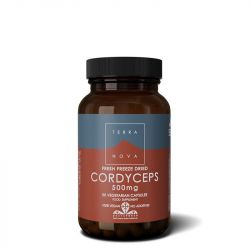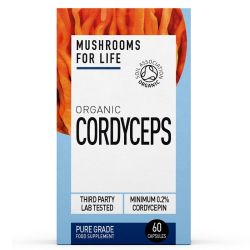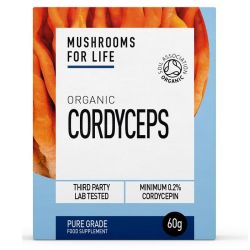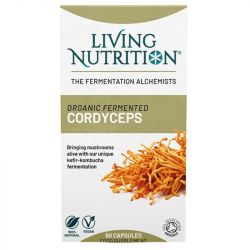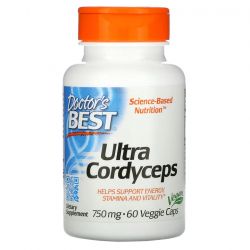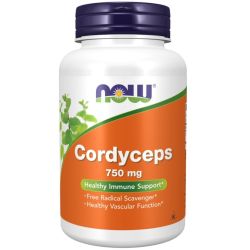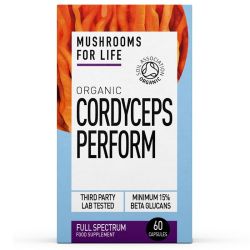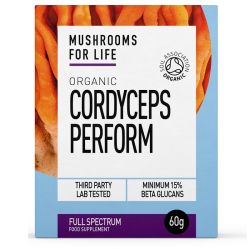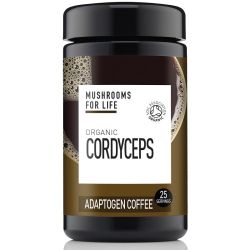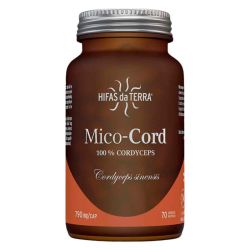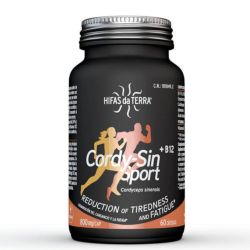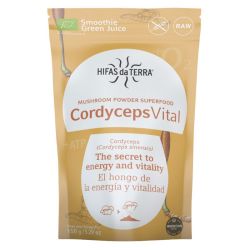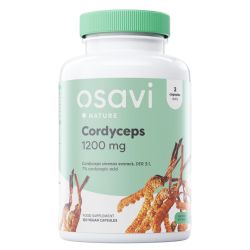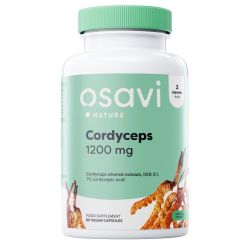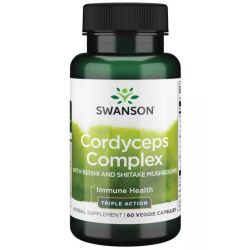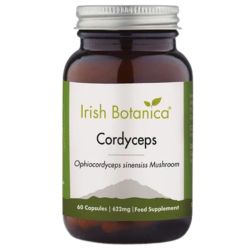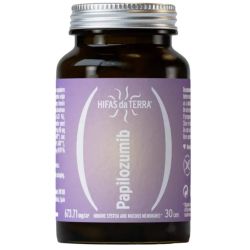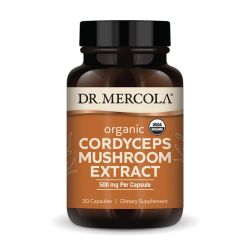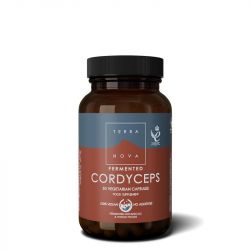Cordyceps Mushroom Supplements
Cordyceps are a genus of parasitic fungi that includes over 400 species. They typically grow on insects in the wild and then release spores which infect other local living bodies. They are reputed for their myriad health benefits.
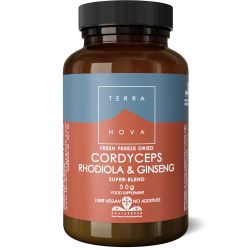 Terranova Cordyceps,Rhodiola & Ginseng Super-Blend Powder 30gSpecial Price £24.24 Regular Price £30.30
Terranova Cordyceps,Rhodiola & Ginseng Super-Blend Powder 30gSpecial Price £24.24 Regular Price £30.30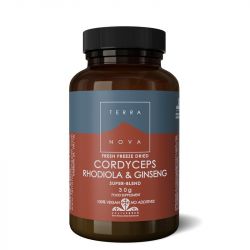 Terranova Cordyceps,Rhodiola & Ginseng Super-Blend Caps 50Special Price £31.57 Regular Price £39.46
Terranova Cordyceps,Rhodiola & Ginseng Super-Blend Caps 50Special Price £31.57 Regular Price £39.46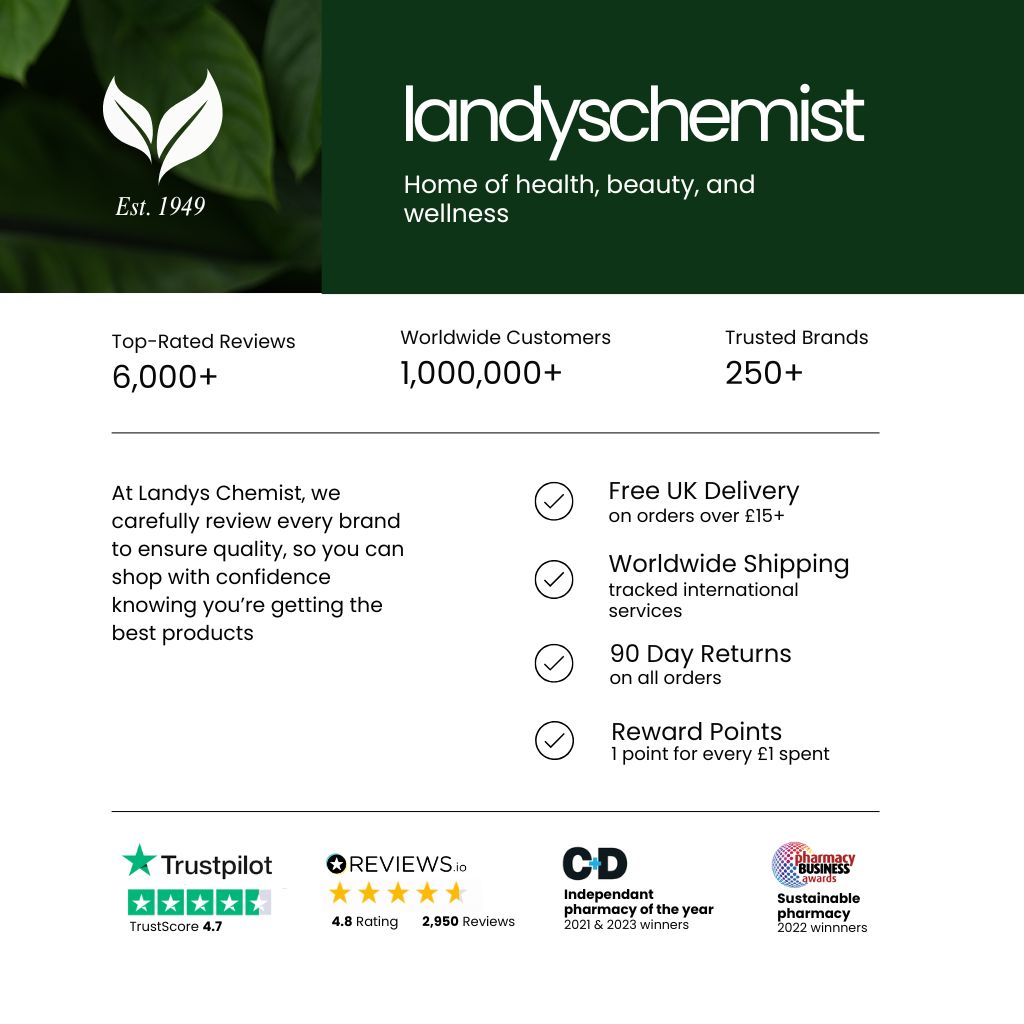 Kiki Health Organic Cordyceps Mushroom Extract Vegicaps 60Special Price £22.40 Regular Price £28.00
Kiki Health Organic Cordyceps Mushroom Extract Vegicaps 60Special Price £22.40 Regular Price £28.00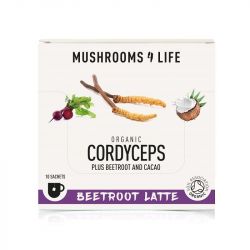 Mushrooms for Life Organic Cordyceps Beetroot Latte Sachets 10Special Price £15.99 Regular Price £19.99
Mushrooms for Life Organic Cordyceps Beetroot Latte Sachets 10Special Price £15.99 Regular Price £19.99
All you need to know about Cordyceps
What are Cordyceps Mushrooms?
Cordyceps are known for their unique ability to infect and take over the bodies of insects and other arthropods. One of the most famous examples is Cordyceps sinensis, which infects caterpillars, ultimately killing them and growing out of their bodies.
Cordyceps fungi are particularly interesting because after infecting their host, the fungus replaces the host tissue with its own mycelial growth. Eventually, the fungus produces a fruiting body, which emerges from the host's body and releases spores to infect new hosts.
What do Cordyceps Mushrooms do?
Cordyceps mushrooms contain several bioactive substances that contribute to their reputed health benefits. The primary bioactive compounds found in these fungi include:
-
Cordycepin (3'-deoxyadenosine): This is a derivative of the nucleoside adenosine and is considered one of the most critical active components. Cordycepin has been studied for its potential anti-cancer, anti-inflammatory, and antioxidant effects.
-
Polysaccharides: These are complex carbohydrates that are believed to enhance the immune system. They have been shown to have anti-tumor, anti-oxidative, and anti-viral activities.
-
Ergosterol: A precursor to vitamin D2, ergosterol is found in significant amounts in Cordyceps. It is thought to have immune-modulating and anti-inflammatory properties.
-
Mannitol: This is a type of sugar alcohol that occurs naturally in Cordyceps. It is thought to help manage oxidative stress and maintain cell integrity.
-
Adenosine: This molecule plays a crucial role in biochemical processes, like energy transfer (ATP) and signal transduction (cAMP). Adenosine itself has anti-inflammatory and potentially neuroprotective properties.
-
Peptides and Proteins: Various small bioactive peptides and proteins from Cordyceps have been identified, which might contribute to its medicinal properties, including immunomodulation and antioxidation.
For Supplement Forms (Capsules, Powders, etc.):
-
- Standard Dosage: Most commercial Cordyceps supplements recommend a dosage of about 1,000 to 3,000 mg per day. This can be split into two or three doses throughout the day.
- Extracts: If the Cordyceps is in an extract form, the dosage might be lower due to higher concentrations of the active ingredients. It’s important to follow the manufacturer’s recommendations on the label.
-
Type of Benefits:
- Energy and Stamina: Some people may notice an increase in energy levels within a few days of taking Cordyceps, especially if they are using it as a supplement for athletic performance or to combat fatigue.
- Immune System Support: For immune-related benefits, the effects may take longer to manifest, possibly several weeks, as the body's immune response gradually adjusts and strengthens.
- Chronic Conditions: For chronic health issues or more significant medicinal effects, such as potential anti-tumor effects, the results might only be noticeable over a longer period, ranging from a few months to even longer.
-
Consistency: Regular and consistent use is typically necessary to see benefits. As with many natural supplements, the effects of Cordyceps are usually cumulative, building up over time.
-
Individual Variability: Individual responses can vary based on personal health, metabolism, and body chemistry. Some people might experience quicker results, while others may notice changes more slowly.
-
Quality of Supplement: The effectiveness can also depend on the quality and concentration of the active ingredients in the supplement. Higher quality products might yield more rapid or effective results.
-
For Energy and Exercise Performance:
- Morning or Before Exercise: If you're taking Cordyceps primarily for energy and stamina, especially to enhance athletic performance, it may be best to take it in the morning or about 30 minutes to an hour before exercise. This timing can help maximize your energy levels during physical activities.
-
For General Health and Wellbeing:
- With Meals: For general health benefits, such as immune support or antioxidant effects, you can take Cordyceps with meals to aid absorption. Splitting the dosage, such as taking it with breakfast and lunch, can help maintain a consistent level in your body throughout the day.
-
For Specific Health Conditions:
- As Recommended by Healthcare Provider: If Cordyceps is part of a treatment for specific health conditions, the best time to take it would usually be as directed by your healthcare provider, who can offer guidance tailored to your specific health needs and the rest of your treatment regimen.
-
Consistent Timing:
- Regular Schedule: Like many supplements, taking Cordyceps at the same time(s) each day may help maintain a steady level in your system and potentially lead to better results.
How can I grow Cordyceps Mushrooms at home?
Materials Needed:
- Cordyceps Militaris Spores or Liquid Culture: Obtain these from a reputable supplier.
- Sterilized Substrate: Common substrates include rice, millet, or a mixture of grains and silkworm pupae (if available and ethically acceptable to you).
- Jars or Bags: For inoculating and growing the Cordyceps.
- Incubator or a Warm Area: Cordyceps require a consistent temperature, generally around 20-24°C (68-75°F).
- Humidity and Light Control: A humidifier to maintain high humidity and indirect light are essential.
Steps to Grow Cordyceps:
-
Prepare Your Substrate:
- Mix the grains or chosen substrate with water until moist but not soggy.
- Sterilize the substrate by autoclaving or pressure cooking it to eliminate any contaminants.
-
Inoculation:
- In a sterile environment (to prevent contamination), inoculate the cooled substrate with your Cordyceps spores or liquid culture.
- Seal the inoculated substrate in jars or grow bags.
-
Incubation:
- Place the inoculated substrate in an incubator or a consistently warm area.
- Monitor for fungal growth and make sure no contaminants are present. This phase can last several weeks until the mycelium fully colonizes the substrate.
-
Fruiting:
- Once fully colonized, expose the culture to lower temperatures (around 18°C or 64°F) and higher light levels to encourage fruiting.
- Maintain high humidity (above 90%) during this phase.
-
Harvesting:
- Cordyceps will produce fruiting bodies that can be harvested once mature. This typically occurs a few weeks after fruiting conditions are established.
-
Post-Harvest:
- After harvesting, Cordyceps can sometimes produce a second flush of fruiting bodies. Adjust conditions as needed based on the health and productivity of the mycelium.

